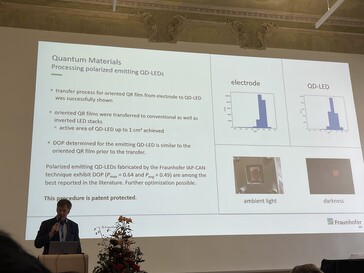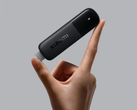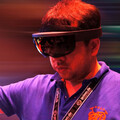Will the QRED TV be the next step after QLED and LCD TVs? Researchers are currently debating the use of quantum rods instead of quantum dots, as a presentation at the SID-MEC conference in Germany showed. Unsurprisingly, Quantum rods have a rod-like shape and could make future TVs and displays more energy efficient, according to Jan Niehaus. He has been researching quantum materials and quantum rods for years at Fraunhofer IAP-CAN.
Conventional quantum dots are used as a layer in TVs marketed as QLED models (LCD with QD-BLU) and might also appear in easier-to-produce microLED screens. Their self-emissive variants for true QLED TVs are not ready for market yet and might also be known as EL-QD, QD-LED, QED, QE display, nano LED. Compared to these quantum dots, the layer of aligned rods could result in lower power consumption.
According to Niehaus, the basic feasibility has now been demonstrated in research. A QR layer was successfully transferred and is expected to show high thermal stability. Therefore, these rods may be particularly suitable for very bright HDR displays and televisions. That being said, research that explores practical applications is still in an early stage.
By the way, the marketing of quantum materials remains pretty complicated. In a promotional video, Samsung has now also started to distinguish between real and fake QLED displays. However, the company does this differently than researchers would expect, as Samsung’s "real" QLED displays still are actually not real QLED displays. That’s why Samsung calls its own QLED technology "QE display" or "QED" and tries to avoid the dilemma of marketing claims that contradict the currently ongoing research in this field.
Source(s)
SID-MEC Conference





















